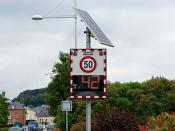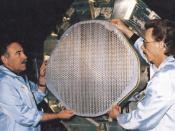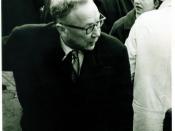History About RadarRadar was developed between 1935-40 independently in several countries around the world as a defence tool for detecting enemy aircrafts and ships. Sir Robert Watson-Watt, a Scots physicist devised the first practical radar system in 1935.
During World War II and immensely after the war technology evolved rapidly in radar, giving radar the following benefits, higher power out puts, greater receiver sensitivity and improved timing and signal-processing circuits.
Radar opened a new field in astronomy in 1958 to 1959 by establishing radar contact with the moon and Venus.
Radar is still widely used in the armed forces, where in fact most advances in radar technology have in fact been carried out but the military. Now a days there is an increasing amount of reasons that civilians can use radar for, an example is air traffic controllers, miners and law enforcement.
How Radar Works Radar involves the transmission of pulses of electromagnetic waves by a directional antenna.
Some of these pulses are reflected back to the antenna from objects that intercept them (A target). The reflected pulses are picked up from a receiver, electronically processed and converted into a visible form. The range of the target is determined by measuring the time it takes for the radar signal to reach the object and return. The target's location is determined by the direction in which the pulse was received.
A receiver attached to the output element of the antenna extracts the desired reflected pulses and rejects those that are not needed, for an example a signal which is needed is the echo from an aircraft, where a signal which is not needed is the echo from the ground or rain.
The picture above shows the antenna sending out a short high-power pulse of radio waves at a known...


